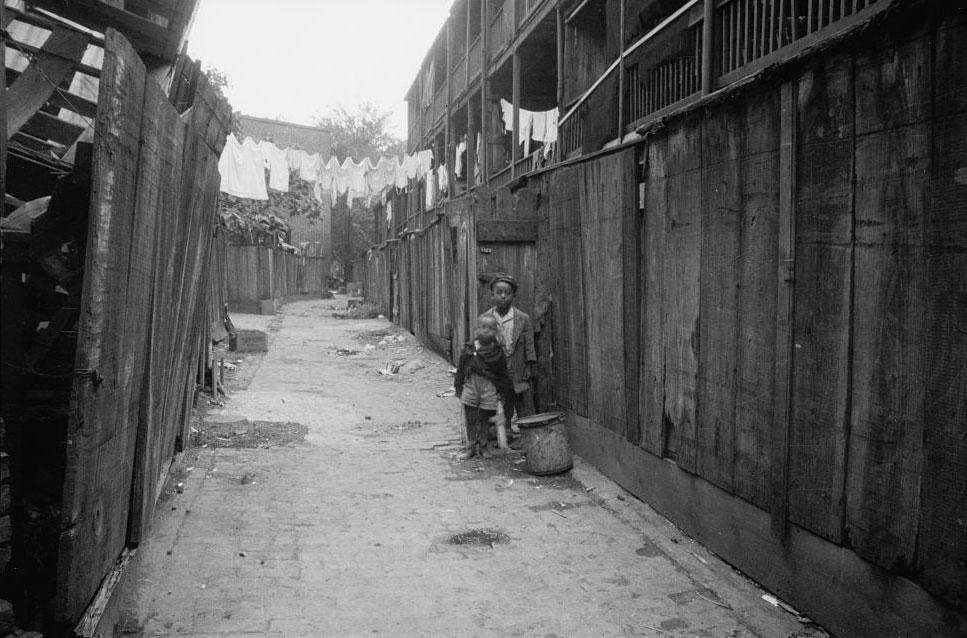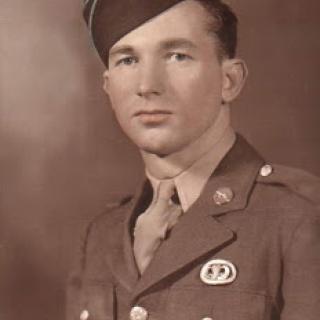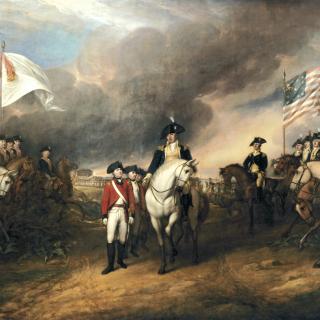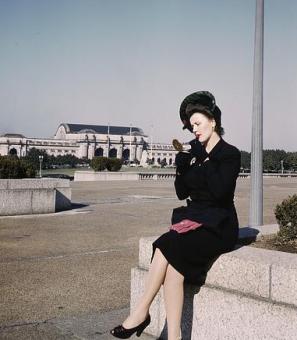Standing Room Only: DC's WWII Housing Crunch
During World War II, the job market in D.C. exploded; between 1940 and 1945, the number of civilians employed by the government almost quadrupled. The Defense Housing Registry, created by the DC government to help these new employees find housing, processed around 10,000 newcomers every month.
The housing market in D.C. was not at all equipped to deal with this influx; construction in the city had slowed during the Great Depression, and halted completely when materials and labor were diverted to the war effort. So what resulted from the overcrowding of Washington? Let’s start with the fun stuff.
The D.C. housing crisis, an echo of what was happening in cities all over the country, was well captured in the contemporary humor of the time; trust the American people to find the joke in any situation. Here’s a popular one that captured the conditions perfectly:
Man A is walking along when he sees Man B calling for help in the Potomac. Man A rushes to the riverside and inquires as to where Man B lives. Upon getting the answer, Man A rushes off to this address. He asks the landlord about a room to rent, confident he’ll receive the drowned man’s room. The landlord replies that it’s already been rented. “How can that be,” Man A asks agape. The landlord replies “it’s been rented to the man who pushed him.”
Although clearly an exaggeration, it was not uncommon for lodgings to be found through a death; apartment-seekers browsed obituaries, hoping to strike gold.
In addition to the running jokes and tongue-in-cheek stories, Hollywood churned out film after film with the housing crisis as the main plot. The most well-known of these, “The More the Merrier” (1943) starring Jean Arthur, tapped into both the housing meme and the unique relaxation of social mores resulting from the crisis. Jean Arthur and her leading man, Joel McCrea, live together for some time before tying the knot- this shocking situation the result of the shortage and the wacky antics of an interfering old man, played by Charles Coburn. It didn’t stop there either; in “Standing Room Only” (1944) the main characters must live together ‘as man and wife’ in order to stay in a room designated for a couple, the alternative being the street.
Despite this merriment and the scores of other films with generally the same theme, some people actually did live in the street. The Black community of Washington had seen its own housing shortage for some time (a segregated city is unforgiving) and squatting in the alleys of the Black neighborhoods was overly common far before the war. In fact, the abundance of “hastily built and overcrowded alley dwellings” was identified by Congress as a major problem in 1934 with the creation of the Alley Dwelling Authority, a force which did little to alleviate the problem.
In the early ‘40s, close to 20,000 people lived in alleys. When new federal employees arrived, finding housing was difficult for everyone but nearly impossible for Black workers. A study conducted at the time found that of the 74 percent of families were living in “deplorable conditions” with “no running water, indoor toilet facilities,” the majority of these families were Black families. Nearly all of new permanent and temporary housing built during this period was earmarked for white workers; it was only after some lobbying that the government set aside some housing for the arriving Black workers.
The new housing constructed did little for the problem, for either white or Black citizens. New construction was not begun until 1942 and although about 400,000 units of temporary housing and 18,000 units of permanent housing were in construction, it never kept up with the pace of new arrivals. The new housing in Alexandria, furthermore, was built without proper drainage systems, a situation which led to sewage in the main reservoir. Officials responded by over-treating the water with chlorine, rendering it still undrinkable.
Sanitation in the DC area further suffered as “overused, rickety outhouses” leaked their contents out onto the sidewalks. Washington had higher rates of tuberculosis and venereal disease “than anywhere else in the country,” and Congress feared about the possibility of an outbreak of typhoid fever.
So yeah, it was kind of an issue. But hey, why not check out some of those movies? We promise there’s only a little racism and raw sewage. In addition to the ones mentioned above, there’s also “Get Going” (1943), “So This is Washington” (1943), “Government Girl” (1944), “Ladies of Washington” (1944), “Johnny Doesn’t Live Here Anymore” (1944), “Music in Manhattan” (1944), and “Dough Girls” (1944), the screen version of a highly successful Broadway play.
Sources:
Gueli, Cynthia. “Girls on the loose”? Women’s wartime adventures in the nation’s capital, 1941-1945. Diss. The American University, 2006.
Krutnik, Frank. “Critical Accomodations: Washington, Hollywood, and the World War II Housing Shortage.” The Journal of American Culture, 30.4 (Dec 2007): 417-433.
“Post-War Housing Crisis: A National Tragedy.” Lustronpreservation.org, 2008.






![Sketch of the mythical fuan by Pearson Scott Foresman. [Source: Wikipedia]](/sites/default/files/styles/crop_320x320/public/2023-10/Goatman_Wikipedia_Faun_2_%28PSF%29.png?h=64a074ff&itok=C9Qh-PE1)












